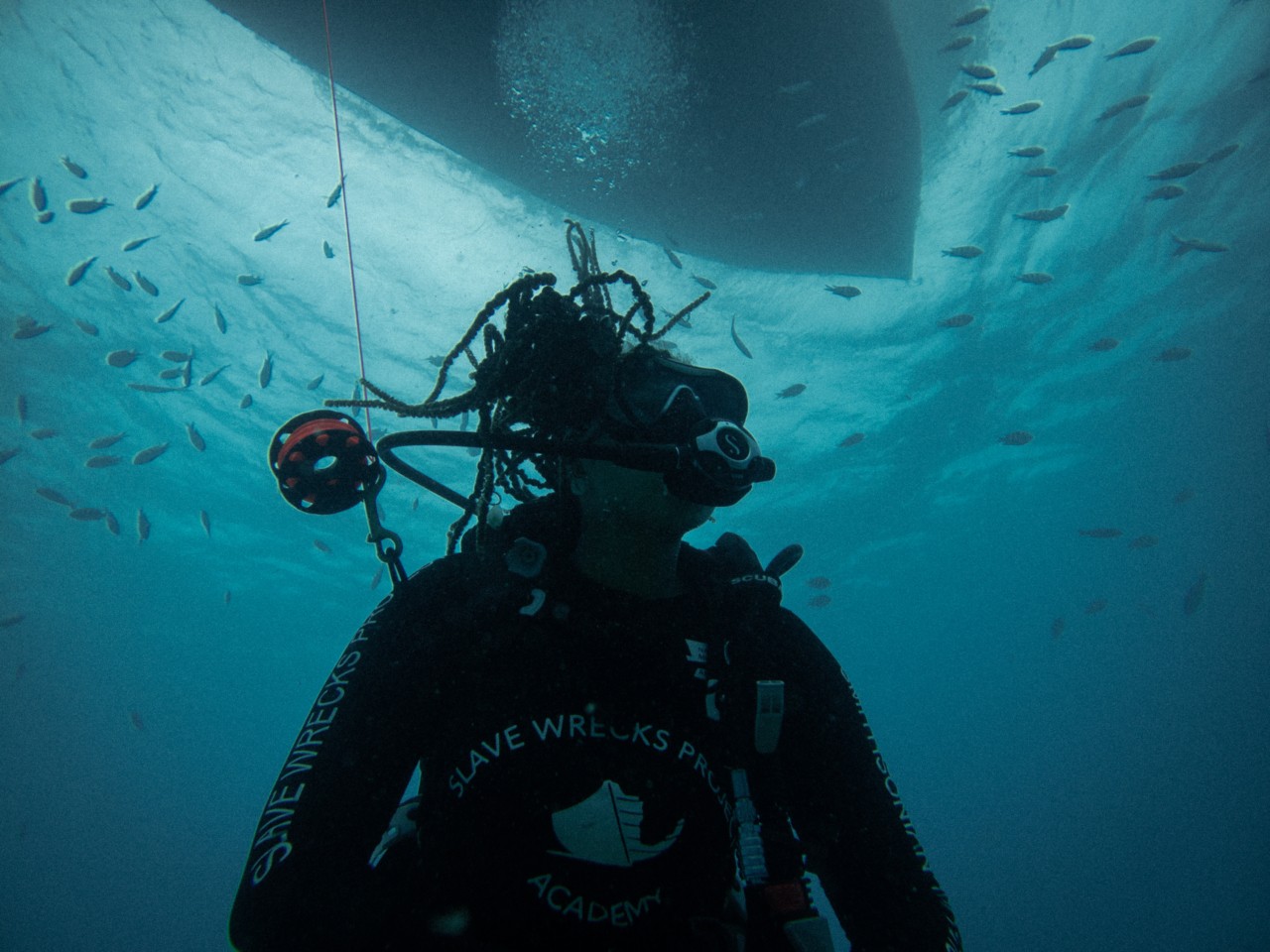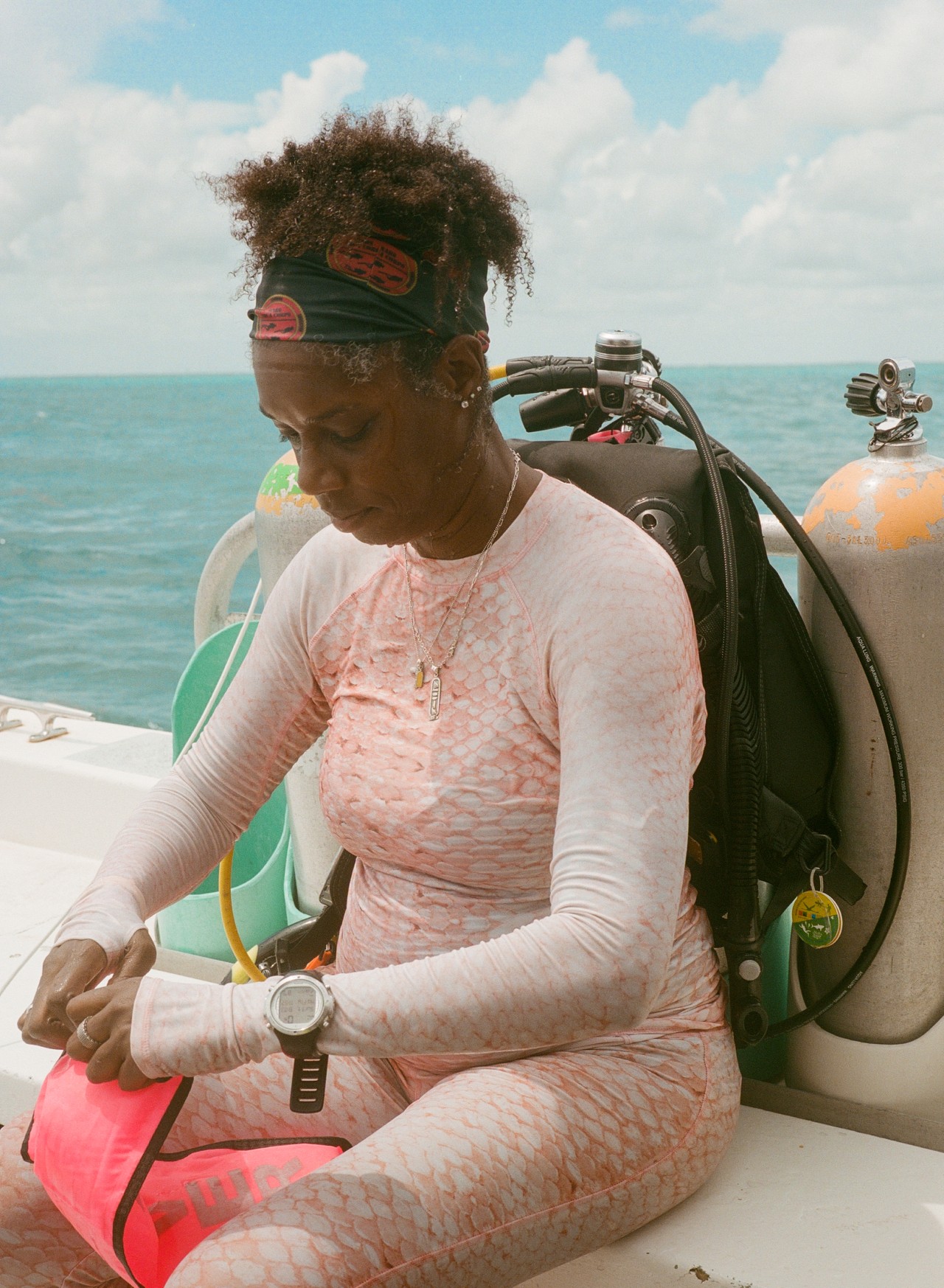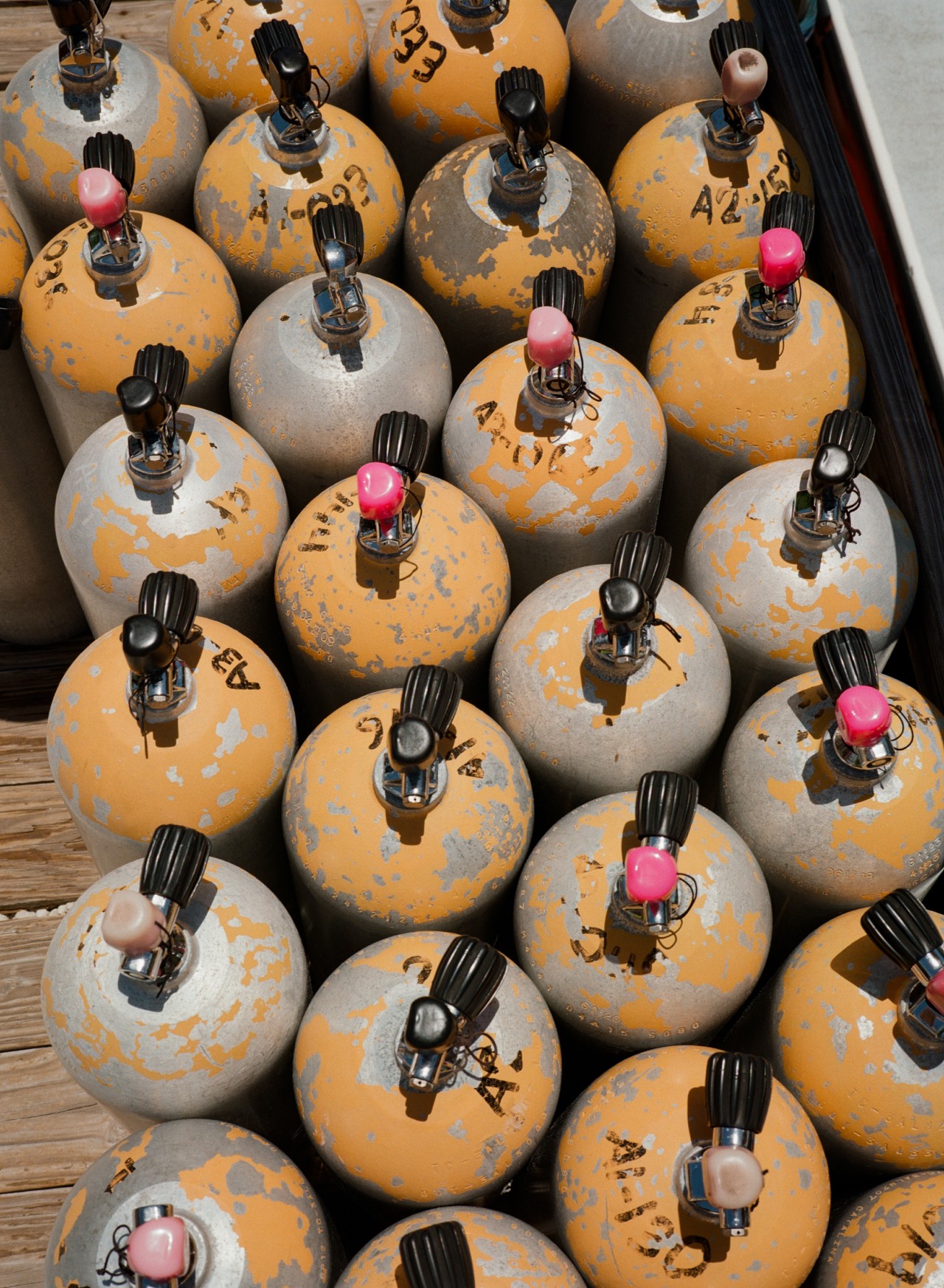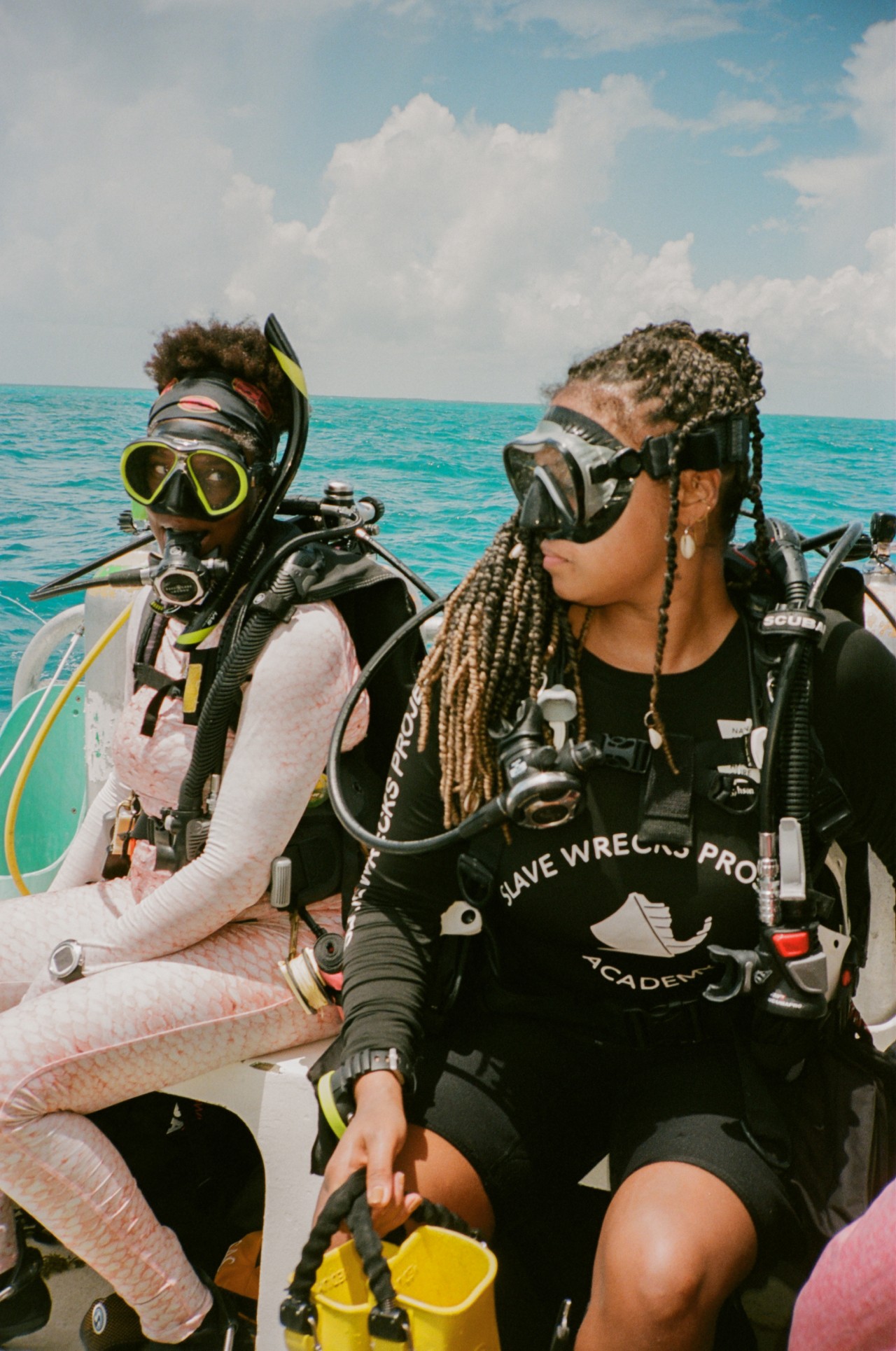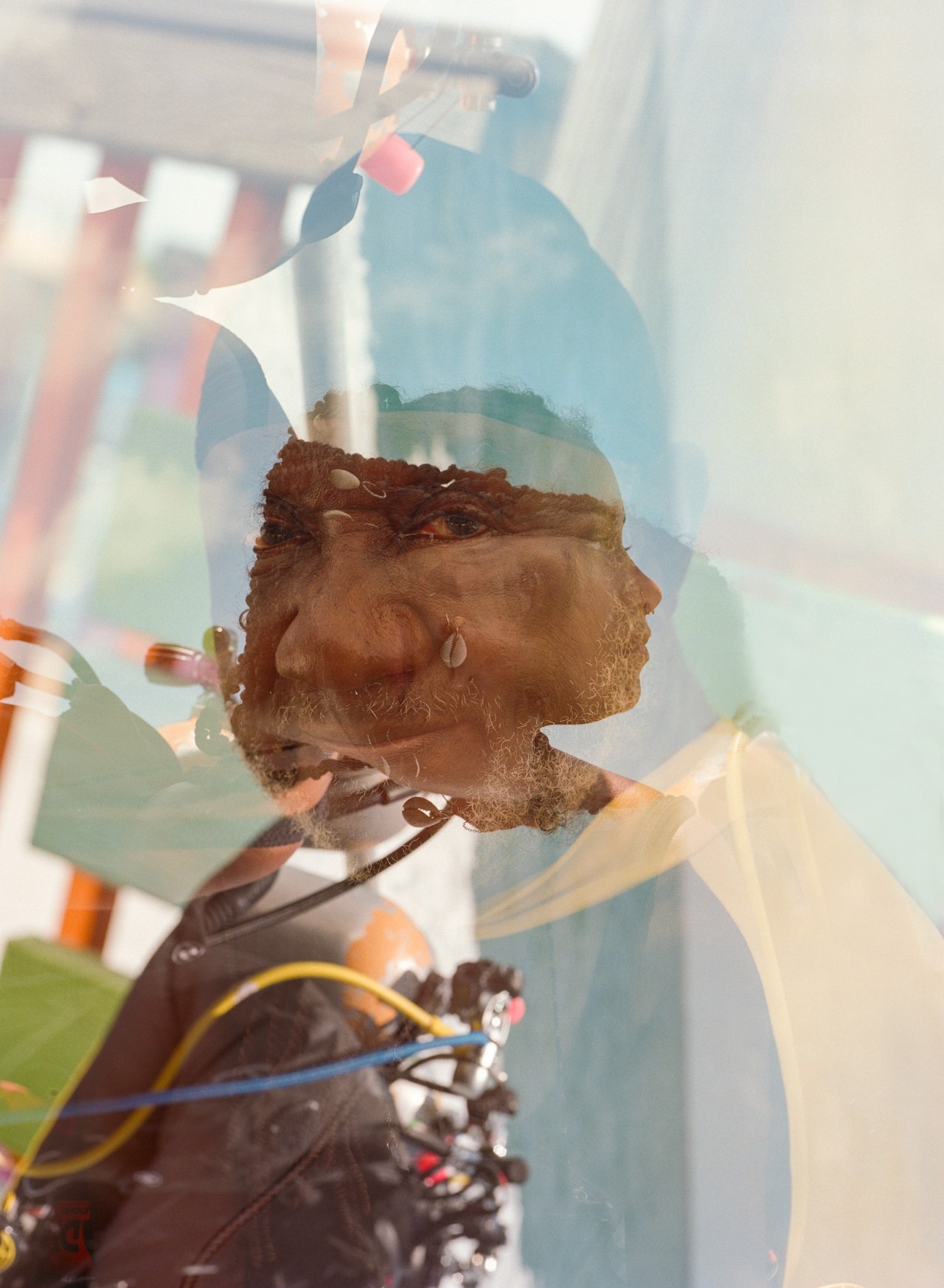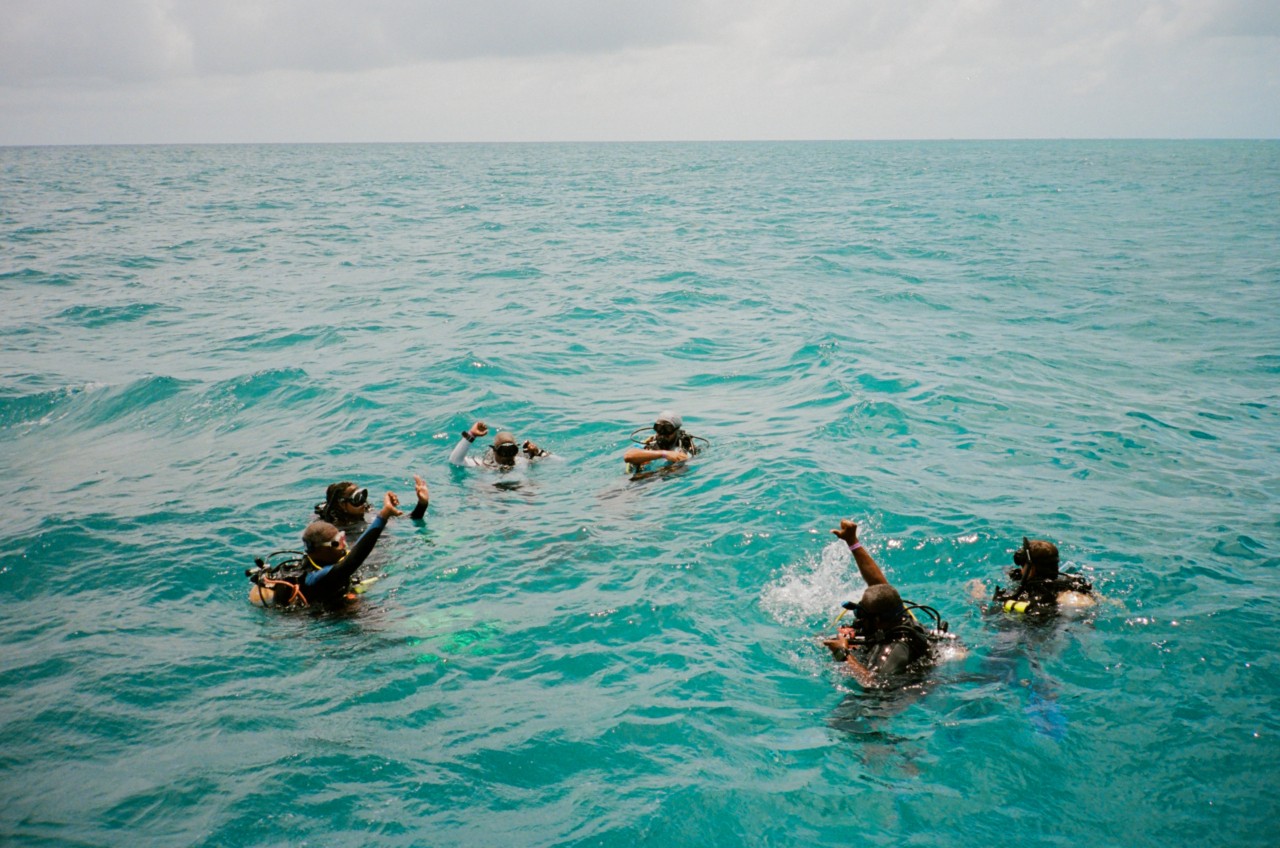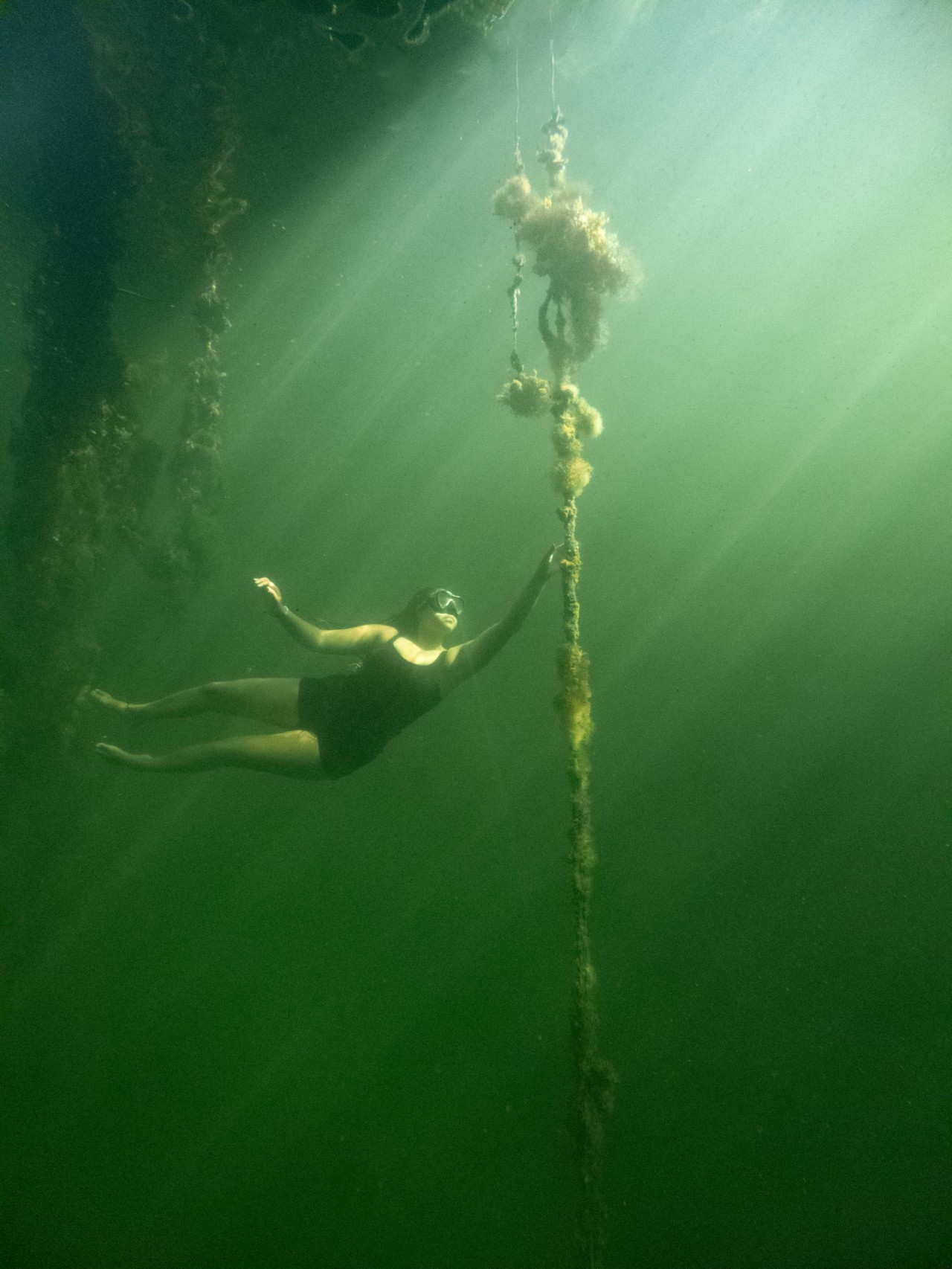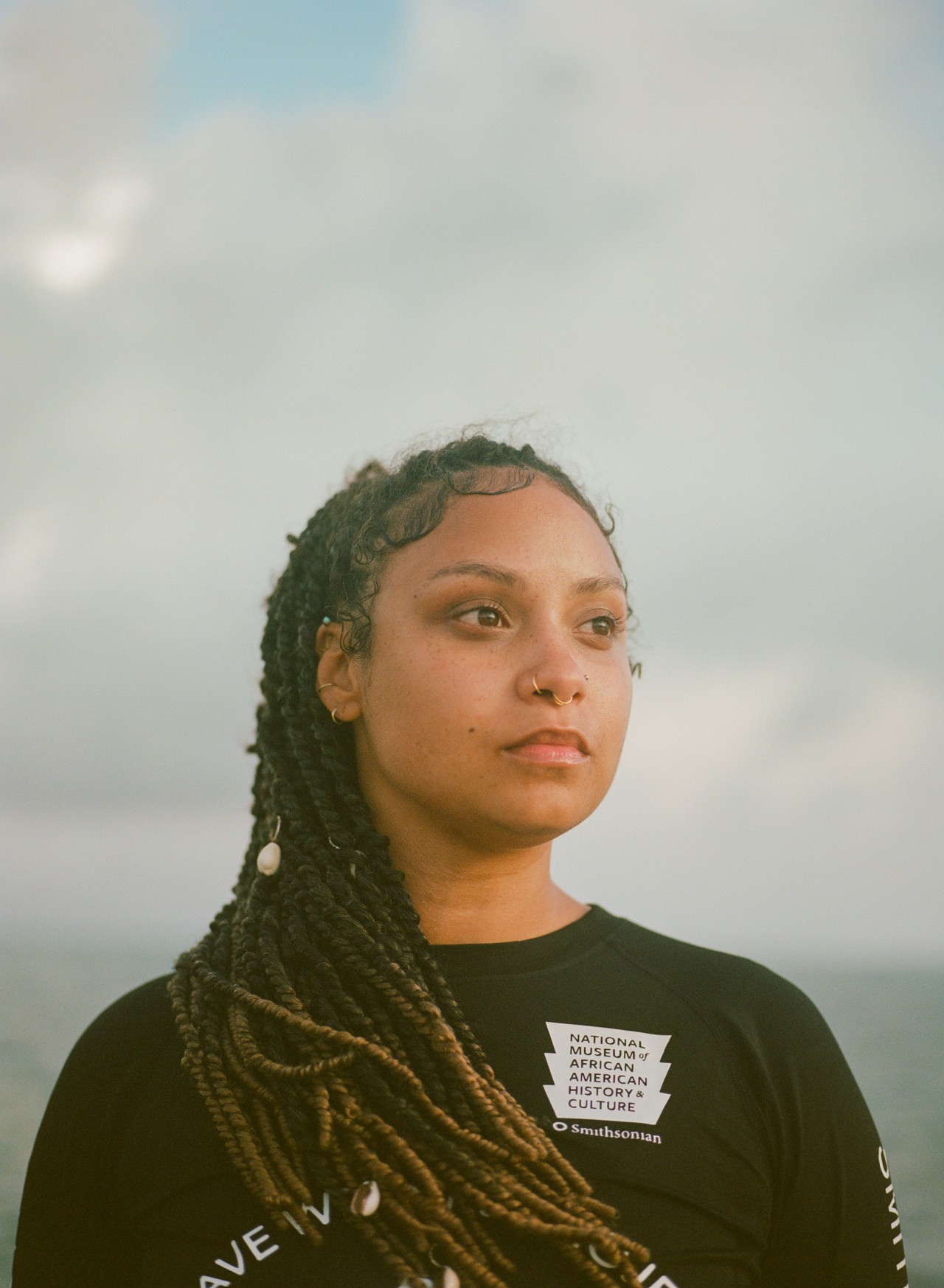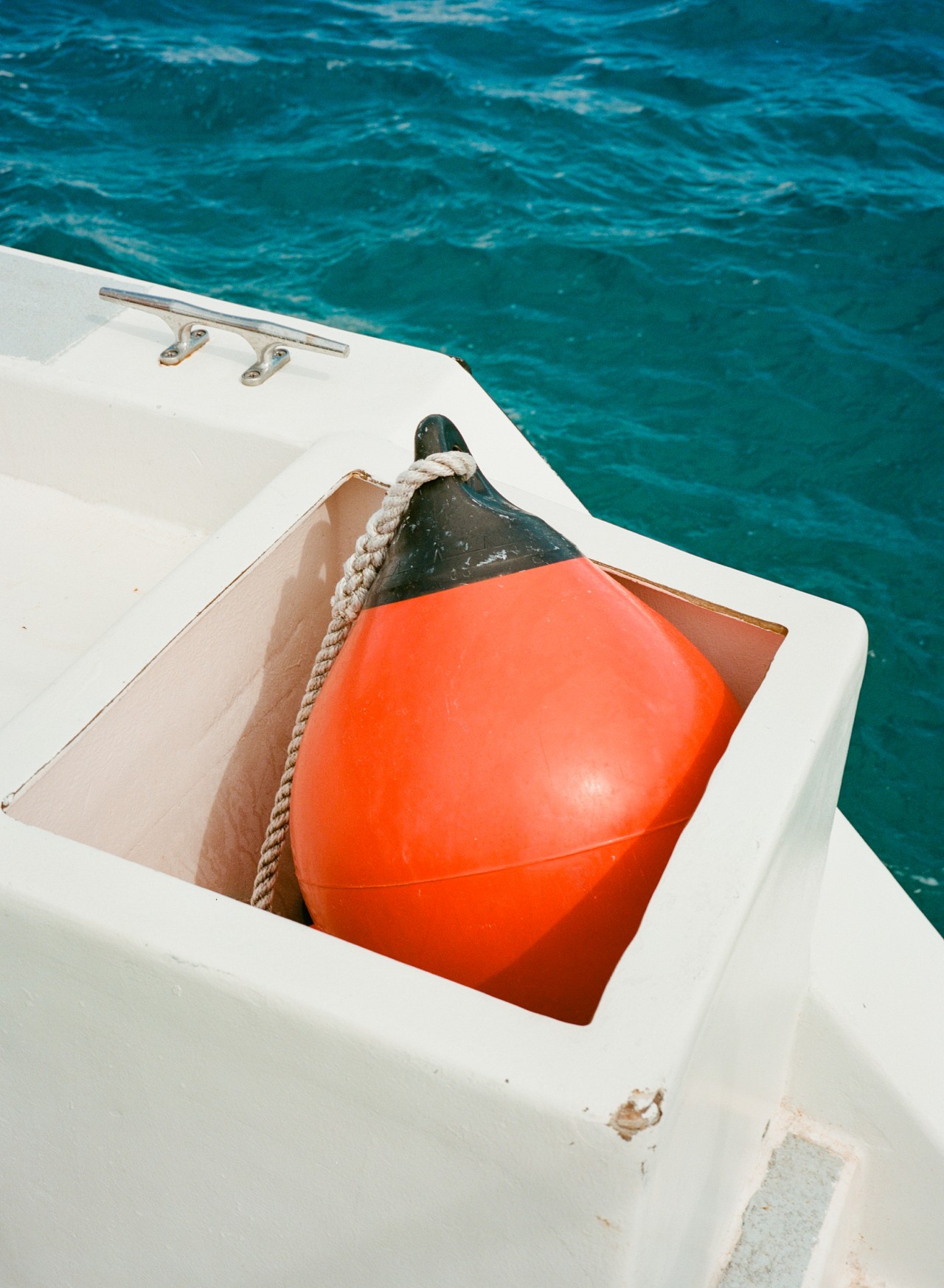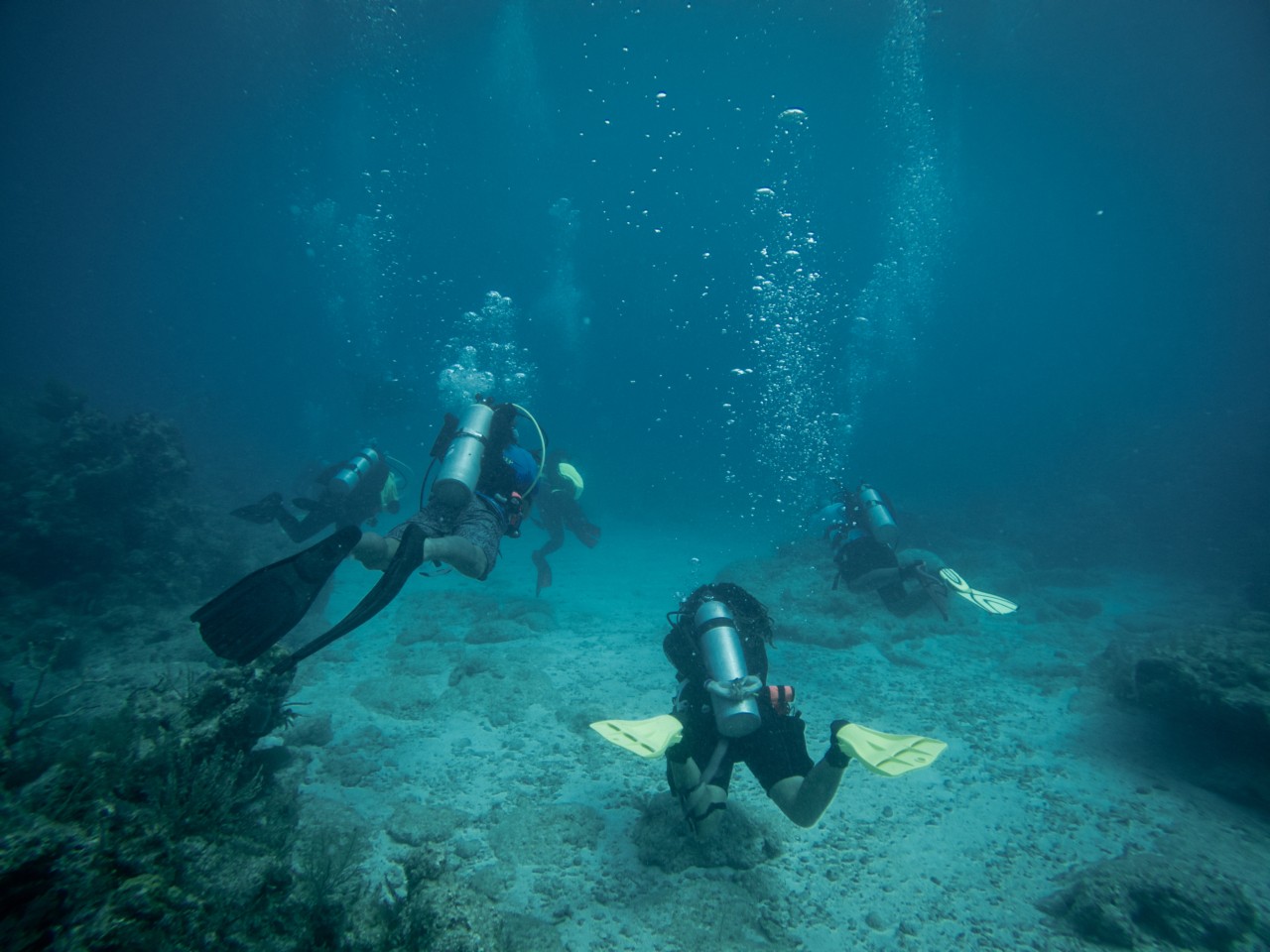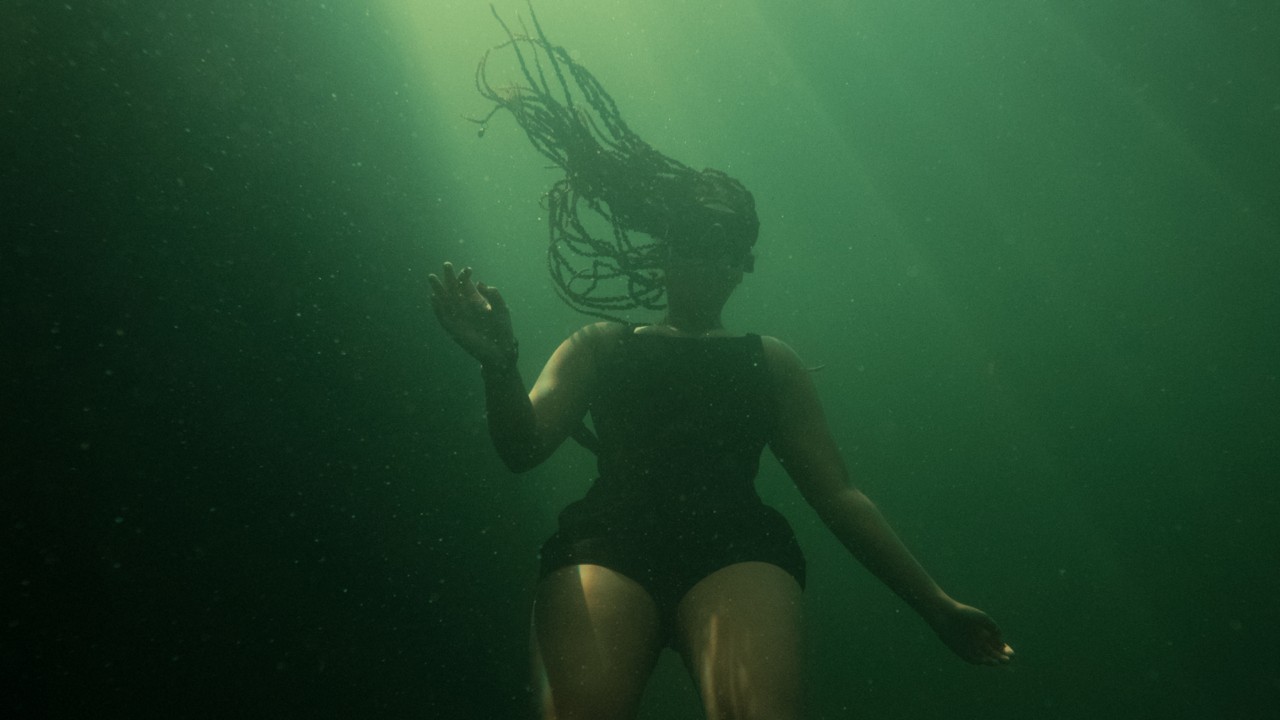

WORDS BY OMNIA SAED
Photographs by Vanessa Diaz and Caroline Castro
At the end of this sentence, rain will begin.
— Derek Walcott, Map of the New World
At a YMCA in Tulsa, Oklahoma, Gabrielle Miller plunges into a pool. While the swimmers around her float to the surface, she lets herself sink. She descends two feet, then six, then 12, until the tips of her toes graze the bottom. And there, she stands.
“It feels like I’m being wrapped, like a weighted blanket,” she said. “In that space, nothing else exists—no problems, no anxieties, not even time.”
The 31-year-old diver and maritime archaeologist is part of the Slave Wrecks Project, a Smithsonian effort to study the global slave trade by excavating sunken slave ships.
In the water, said Miller, “I see portals.”
The effort, hosted by the National Museum of African American History and Culture, unites a network of communities, scientists, and institutions from across the diaspora, spanning from Mozambique to St. Croix. Central to this mission is the training and mentorship of future maritime archaeologists in a field that remains largely inaccessible.



“As a scholar engaged in this work, and as one of the very few Black archaeologists in the world—especially those of us who dive and study the Black Atlantic—I can’t think of a single one of us who doesn’t speak about how deeply this work is connected to our own ancestral practices. It’s about paying homage to those who came before us and seeking justice for those whose voices and stories have been reduced to mere commodities.”
In June, Miller helped lead the second session of the Slave Wrecks Project Academy in Senegal, where students dove off the coast of Gorée Island, once the largest slave-trading hub on the African coast.
“People were tossed overboard like refuse. Many died on the voyage and became a permanent part of the sea. So, when we excavate, visit, and monitor these shipwrecks, I don’t think many people realize that we’re standing in a graveyard,” she said.
Part of Miller’s practice, as she describes it, is tending to these graveyards—preserving the sense of space. The ships and the artifacts are important, but her divers are urged to ask themselves: How was this space used? How do we memorialize it? And what do you see?

“When we excavate, visit, and monitor these shipwrecks, I don’t think many people realize that we’re standing in a graveyard.”
“It’s an architecture for spirit,” said Diana Baird N’Diaye, former Senior Curator for the Smithsonian’s Center for Folklife and Cultural Heritage. N’Diaye joined Miller in Senegal, where she worked with students to build a “mender’s blind”—a memorial for the shipwrecks, constructed from plastic and textiles dredged from the water.
Climate change has introduced yet another complex layer to the work. Warming waters and the growing risk of hurricanes bring new challenges. Plastic pollution does, too.
“These fabrics, discarded as trash by European markets and ending up in the ocean, are literally wrapping themselves around the shipwrecks,” said Miller. “Part of caring for the site is cleaning it up.”
The roots of today’s ecological crisis lie in racial slavery and colonialism, which established exploitative practices of both people and the environment, fueling the Industrial Revolution and accelerating climate change.



“My dad is turning 80 this year. When he was born, cyclones were a once-in-40-year event… But my six-year-old has already seen four cyclones in just one year. And they say it’s only going to get worse,” said Yara Costa, whose virtual reality exhibition in Mozambique, Nakhodha and The Mermaid, highlights how African coastal communities are being impacted by global warming by intertwining the legacy of slavery and the memories of fishermen and women of the sea. The Slave Wrecks Project has maintained a long-standing engagement with the Island of Mozambique, a UNESCO World Heritage Site.
“Those least responsible for the climate crisis are hit hardest; their homes are destroyed by storms, leaving them with barely enough time or resources to rebuild before the next one strikes. As they struggle to recover, rising sea levels compound their difficulties, making everyday life a constant battle against catastrophe,” said Costa.
Artists like Costa, N’Diaye with her textile work, and Miller—who curates exhibitions and creates art that replicates the sensations of being underwater, from the way light reflects off the surface to the muffled sounds that surround her—are all grappling with the question of survival amidst catastrophe. “How do we solve a problem we didn’t create?” asks Miller.
The answers aren’t clear-cut, but the Slave Wrecks Project is turning to the water in search of them. Rife with contradictions, the water is both a source of healing and a site of terror, a cradle of freedom and a resting place for death, a harbinger of disaster and a place of shelter and safety. In the words of African American literary scholar Barbara Christian: “We were never able to put our people to rest in the ways that they should have been put to rest. So our dead continue to haunt us.” Their unrested spirits, stirred by an empire that has ravaged people, water, and land, sit in the eye of the storm.

The water is both a source of healing and a site of terror, a cradle of freedom and a resting place for death, a harbinger of disaster and a place of shelter and safety.
The work of scholars then, of divers and artists like Miller who are tasked with uncovering the horrific realities of the transatlantic slave trade, is vital to prevent such catastrophes from recurring. History tends to repeat itself unless we confront it directly and acknowledge the hauntings it leaves behind.
This repetition is tragically evident in the current migrant crisis, where the Mediterranean Sea has become the world’s largest migrant grave, mirroring a modern Middle Passage. Over 30,000 migrants in the region have died or gone missing in the past decade, a number likely to increase as climate change continues to disproportionately impact the most marginalized communities.
“I think of the objects beneath the ground as more than just artifacts; they’re like stand-ins for the people who once used them. For me, dead doesn’t mean gone. These objects are a way of saying, I am here. As people created meaning and breathed life into these items, they left a part of themselves within them,” said Miller.
In reality, the remains of those enslaved have become part of the ocean, disintegrated into the sand, integrated into coral, and transformed into the very fabric of the sea. Memorializing their existence is a way of asserting their enduring presence and resilience, a testament to their ability to survive even in the face of unimaginable adversity.
“I’m not chasing utopia; I’m chasing wholeness and power. Every narrative I explore, no matter how far back I go, involves catastrophe. But what I’m really interested in is what comes next—how we survived. We’re still here, so what happens after the disaster?”



Correction,
September 4, 2024 12:36 pm
ET
This article was corrected to clarify the frequency of cyclones when Yara Costa's grandfather was born.
For Black Archaeologists, the Atlantic Ocean is an Ancestral Graveyard
